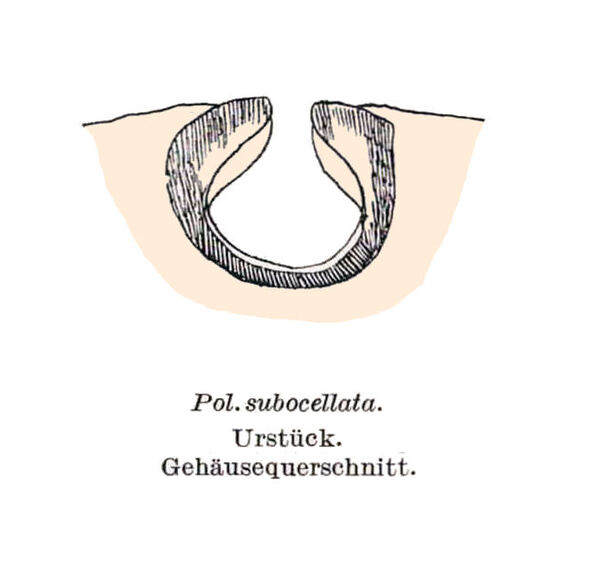Polyblastia subocellata Th. Fr.
Nova Acta R. Soc. Scient. Upsal., vol. extraord. 8: 16, 1877.
Synonyms:
Distribution:
Description: Thallus crustose, thinly episubstratic, whitish, mostly continuous, granulose. Perithecia black, completely immersed in the thallus, globose, with a flattened apical part, 0.5-0.6 mm across (in section), often surrounded by a thalline swelling. Involucrellum thick, completely surrounding the perithecium; exciple pale brown, merged with the involucrellum; hamathecium of periphyses and periphysoids, interascal filaments absent; hymenial gel hemiamyloid, I+ red (I+ blue at very low concentrations of I), K/I+ blue. Asci 8-spored, clavate, K/I-, fissitunicate, the wall thickened above, with an ocular chamber, dehiscent by extrusion of an endotunica to form a delicate rostrum. Ascospores muriform, at first hyaline, then turning pale brown, ellipsoid, 45-65 x 19-30 μm. Photobiont chlorococcoid. Spot tests: K-, C-, KC-, P-, UV-. Chemistry: without lichen substances.Note: a species of unclear relationship, perhaps belonging to Sporodictyon, found on cushions of mosses over siliceous substrata; rare, from the boreal-alpine to the temperate-alpine zone, with a few records from the Eastern Alps (Austria); to be looked for in the Italian Alps.
Growth form: Crustose
Substrata: soil, terricolous mosses, and plant debris
Photobiont: green algae other than Trentepohlia
Reproductive strategy: mainly sexual

Predictive model
Growth form: Crustose
Substrata: soil, terricolous mosses, and plant debris
Photobiont: green algae other than Trentepohlia
Reproductive strategy: mainly sexual

Predictive model
 Index Fungorum
Index Fungorum
 GBIF
GBIF


